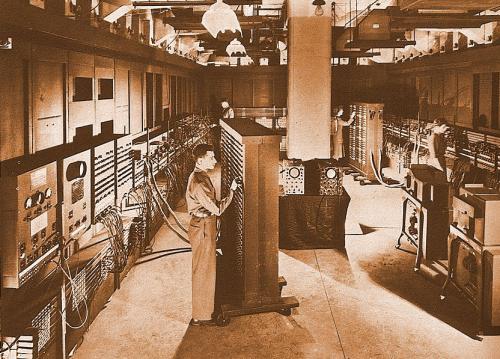Do you know how CD-ROM works?
Have you ever wondered how a laser disc like CD holds music, video or other information?
Often, you hear about data or information being stored on the disc in the form of "0s" and "1s" or binary code! What exactly is this?
Simply put, a CD is a piece of polycarbonate plastic coated with different layers of material. During production, this plastic is impressed with microscopic bumps arranged as a single, continuous, extremely long spiral track of data,

Once the clear piece of polycarbonate is formed, a thin, reflective aluminum film is layered onto the disc, covering the bumps (or pits if you are looking at the aluminum layer). A thin layer of protective acrylic is then sprayed on it and labels can be printed on the acrylic layer. A cross section of the CD is shown below,

In the CD player, a laser beam is directed onto the reflective side of the CD. A light detector (opto-electronic sensor) collects the response of the light on the pit or pitless area based on the change in reflectivity. A pit is recorded as a "0" and a flat area is recorded as a "1". The electronics in the drive then interpret the changes in reflectivity into readable information.

Note: CD-R or CD-RW is a variation of the Compact Disc that uses different ways of storing data as compared to CD-ROM.
Do you know how the first computer looks like?

picture of ENIAC
(Source: courtesy of Columbia University)
ENIAC was enormous. It contained 17,500 vacuum tubes, linked by 500,000 soldered connections. It filled a 50-foot long basement room and weighed 30 tons.
Today, a single microchip, no bigger than a fingernail, can do more than those 30 tons of hardware.
Do you know how the Internet was borned?

Brief History
In the early 1960s, a think-tank at the RAND Corporation[1] was faced with devising a strategy for providing reliable communications in the event of a nuclear war. The proposal, made public in 1964, was a network with no central authority that was designed to work effectively even if large portions of the network were inoperable. All nodes in the network were equal in status to all other nodes, with each node having its own authority to originate, to pass and to receive messages. The messages sent on the network were divided into packages, and each packet was given a destination node address. Packets were sent through the network from node to node until their final destination was reached.
In 1969, the U.S. Department of Defense commissioned the Advanced Research Projects Agency to investigate network research. In the fall of 1969, the first node of the network was established at the University of California at Los Angeles (UCLA). By the end of the year, three other nodes were established, and the ARPANET was born.
By 1972, the number of nodes had grown to 37. Although it was assumed that researchers and scientists would be using the network mainly for long-distance computing, it became clear that person-to-person communication was the most popular use. Thus, the Internet was born.
[1] Research ANd Development is a nonprofit global policy think tank first formed to offer research and analysis to the US armed forces.
Do you know why finding fault in programming is called "Debugging"?
American engineers have been calling small flaws in machines "bugs" for over a century. Thomas Edison talked about bugs in electrical circuits in the 1870s. When the first computers were built during the early 1940s, people working on them found bugs in both the hardware of the machines and in the programs that ran them.
The invention of the term is often erroneously attributed to Grace Hopper[2], who publicized the cause of a malfunction in an early electromechanical computer.

Photo of possibly the first computer bug
In 1947, while Hopper was working on the Mark II computer at Harvard University, operators traced an error in the Mark II to a moth trapped in a relay. They taped the insect in their logbook and labeled it "first actual case of bug being found." The words "bug" and "debug" soon became a standard part of the language of computer programmers.
Hopper was not actually the one who found the insect and she readily acknowledged.

Grace Hopper
(Source: courtesy of http://turnbull.mcs.st-and.ac.uk/history/PictDisplay/Hopper.html)
[2] Rear Admiral Grace Murray Hopper (December 9, 1906 - January 1, 1992) was an early computer pioneer. She was the first programmer for the Mark I Calculator and the developer of the first compiler for a computer programming language.
